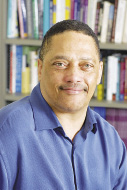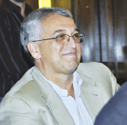 Psychotherapists of one ilk or another have been making their rounds for millennia. And for just about as long, men have generally shied away.
Psychotherapists of one ilk or another have been making their rounds for millennia. And for just about as long, men have generally shied away.
“We don’t seek help for our problems, we don’t talk about our problems,” said Jay C. Wade, Ph.D., associate professor of psychology. “Men have not been consumers of any kind of help. So they don’t go to doctors, and they definitely don’t go to therapists.”
Wade, the current president of the Society for the Psychological Study of Men and Masculinity, also known as Division 51 of the American Psychological Association (APA), wants to change that collective state of mind.
He and a colleague, Mark S. Kiselica, Ph.D., professor and former chair of the Department of Counselor Education at The College of New Jersey, have organized the 3rd National Psychotherapy with Men Conference, to be held on Saturday, June 9 at the Lincoln Center Campus.
Presented by the APA, the conference’s aims are to broaden psychotherapy’s reach into the male population, and boost therapy’s treatment success rate with men, Wade said.
Keynote speakers are James O’Neil, Ph.D., professor of educational psychology at the University of Connecticut, who will focus on men’s gender role conflicts; and Douglas C. Haldeman, Ph.D., a clinical professor of psychology at the University of Washington, who will discuss power and privilege in relationships between gay therapists and straight male clients within the therapeutic context.
Breakout sessions will address topics that include psychotherapy with young men, the returning male war veteran, women counseling men, humor in psychotherapy, and substance abuse counseling—all aspiring to “help men to be better men,” Wade said.
 Although men might consent to go through a therapist’s door once, Wade said, the challenge is to get them to return. That often requires that a therapist rethink his or her role, and to take stock of cultural changes that have helped to broaden therapy’s appeal for men.
Although men might consent to go through a therapist’s door once, Wade said, the challenge is to get them to return. That often requires that a therapist rethink his or her role, and to take stock of cultural changes that have helped to broaden therapy’s appeal for men.
Much of that shift, Wade contends, is attributable to how parents born in the 1950s and 1960s raised their young boys to be more attuned to both their inner and outer worlds—and then to articulate their sentiments without fear of compromising their “maleness.”
“Boys and young men are much more able to express emotions,” said Wade. “That was impossible 20 years ago.”
Serious obstacles remain, though—perhaps principally, women’s ascendancy in the world of work, underscored last year, when for the first time in U.S. history, women comprised a majority of the workforce.
Although gender norms continue to change as family responsibilities and dynamics shift, Wade said, “Men in general in our culture have felt they should be the leader of the family and be the provider.”
Today’s current economic climate can lead to overall cultural anxiety, said Wade, and may be especially difficult for men, given those male gender role expectations.
The conference will address this and other topics relating to how psychotherapy meets the specific needs of men today.
The full conference program is online at http://www.fordham.edu/audience/pmc/index.htm
— Richard Khavkine

